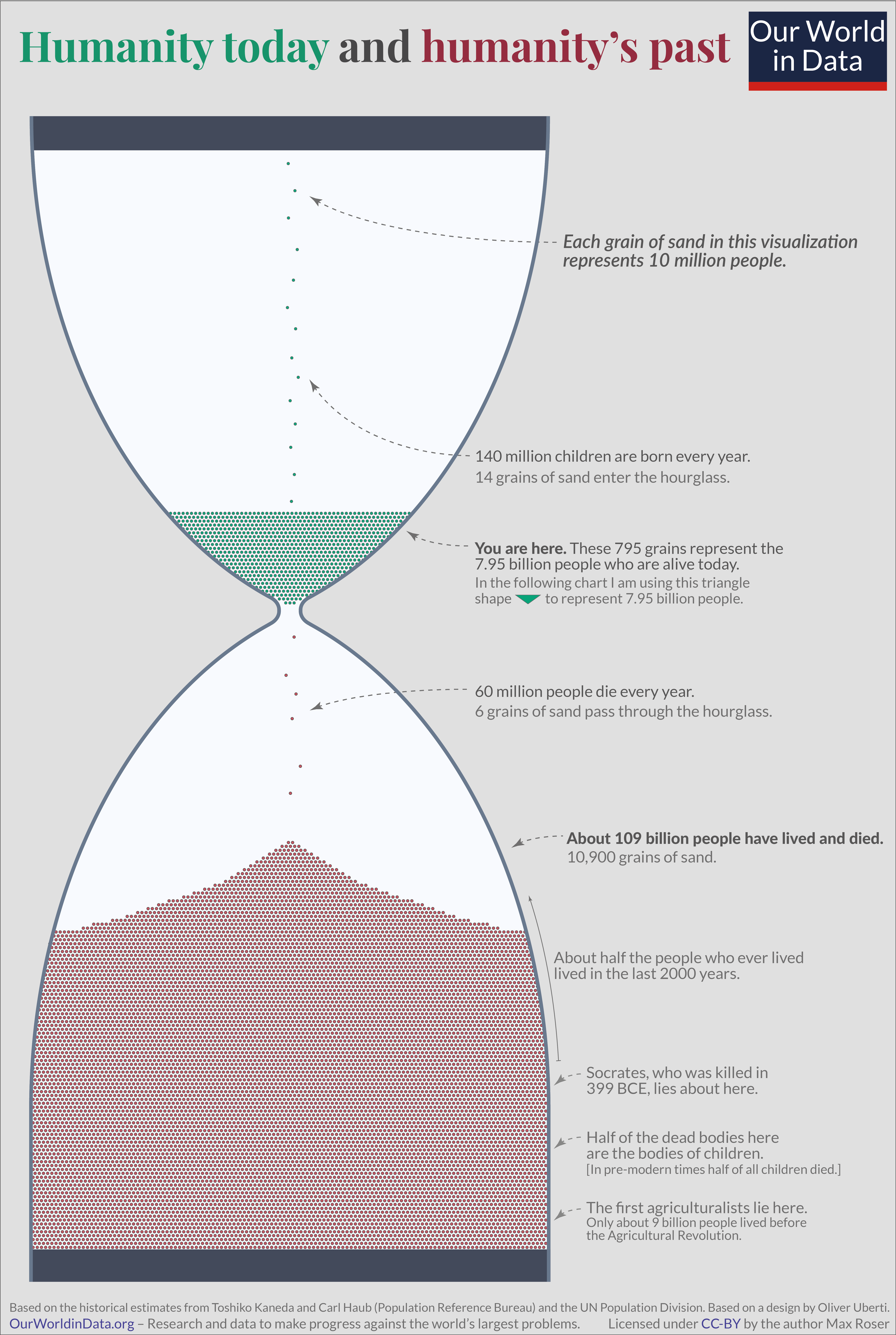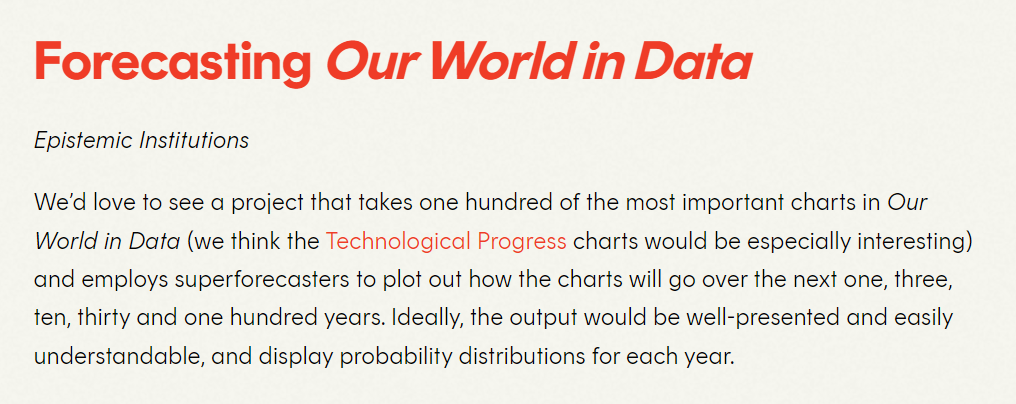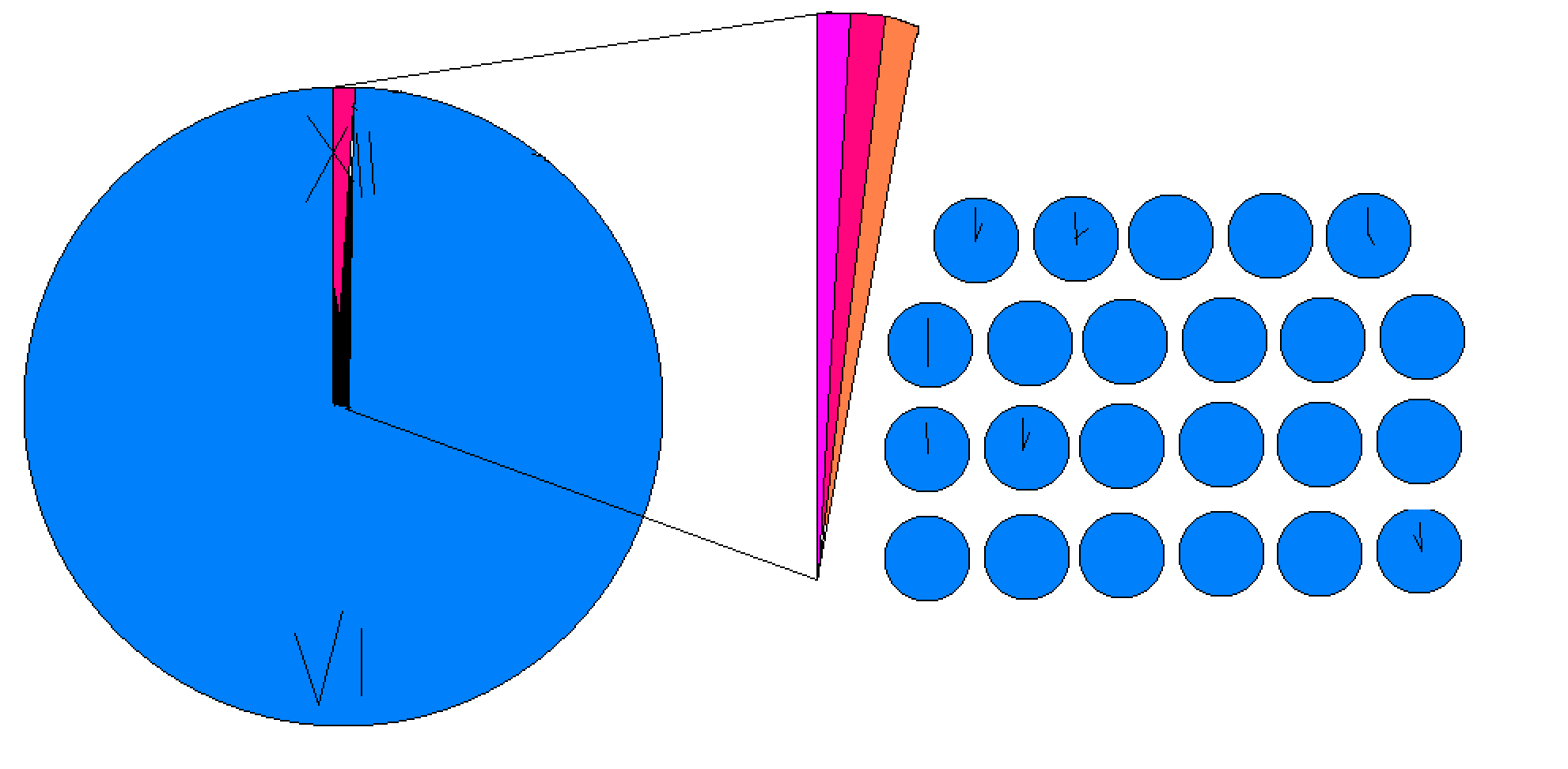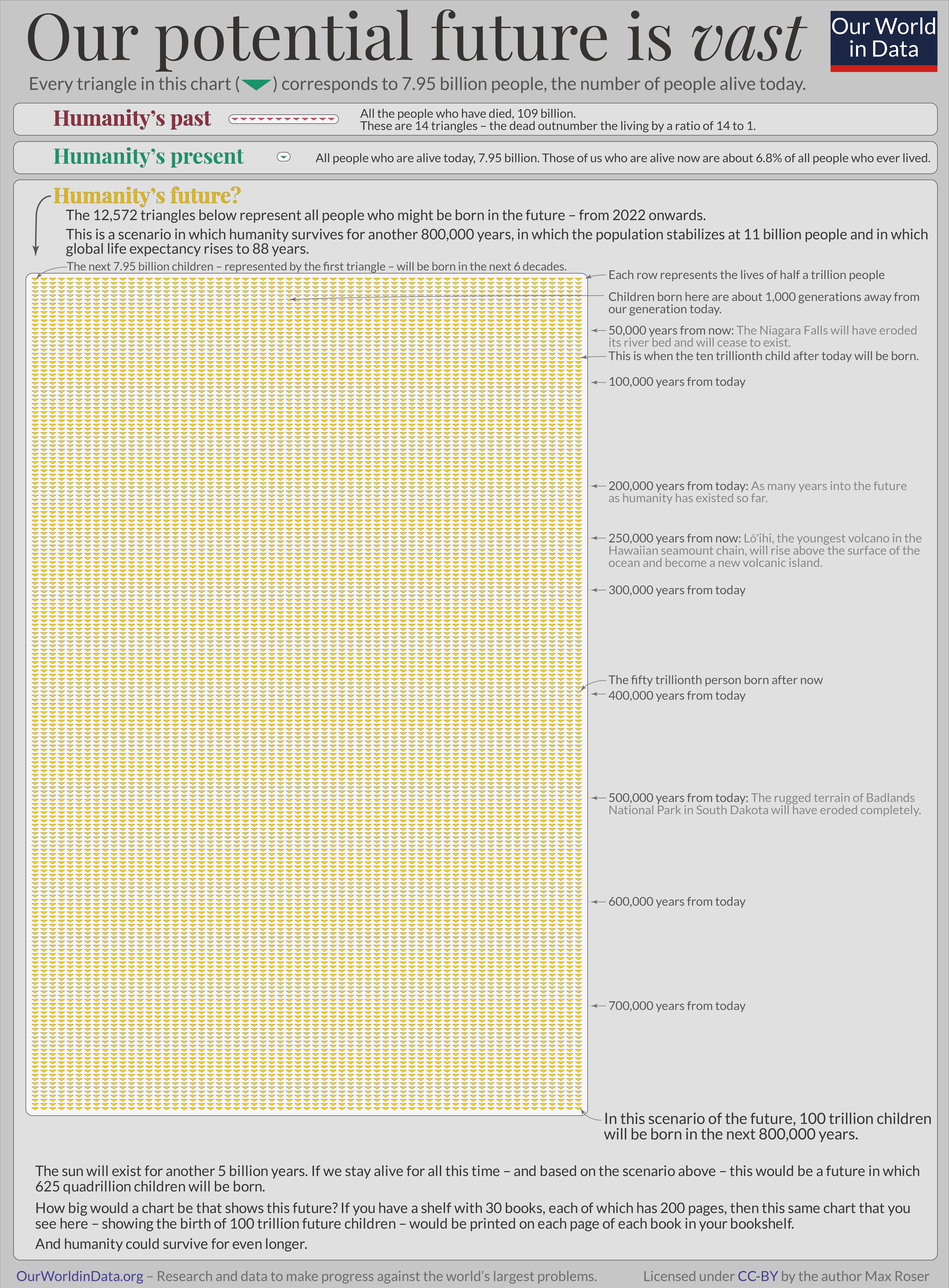This is a linkpost for https://ourworldindata.org/longtermism
Hi everyone! I'm Max Roser from Our World in Data.
I wanted to share an article with you that I published this week: The Future is Vast: Longtermism’s perspective on humanity’s past, present, and future.
In it I try to convey some of the key ideas of longtermism in an accessible way—especially through visualizations like the ones below.
I hope it makes these ideas more widely known and gets many more people interested in thinking what we can do now to make the long-term future much better.
We have written about some related topics for a long time (in particular war, nuclear war, infectious diseases, and climate change), but overall we want to do more work that is helpful for longtermists and those who work on the reduction of catastrophic & existential risks. To link to one example, I recently wrote this about the risk from nuclear weapons.
My colleagues Charlie Giattino and Edouard Mathieu are starting to work on visualizing data related to AI (e.g., this chart on AI training compute).
Charlie, Ed, and I are sharing this here because we'd love to hear your thoughts about our work. We're always interested to hear your ideas for how OWID can be helpful for those interested in longtermism and effective altruism (here is Ed's earlier question on this forum).





I really enjoyed the article. A well-written, short introduction and great (as usual) visualisations which will likely see widespread use for conveying the scope of our future.
Personally, I didn't find the 17m * 4600km beach analogy for 625 quadrillion people super intuitive, and yes, I know, such numbers are basically never intuitive. A framing I found a bit easier to grasp compared the total possible number of humans to seconds in a whole year and said that the number of humans so far equals only a few seconds after midnight on new year or something. But that's just a tiny personal preference, you probably thought about such analogies a lot more.
Thanks for clearly presenting numbers and topics that are more difficult to convey, it's great!
Thanks for doing the calculations! I agree, not straightforward. But like Erich said, it was not about representing a single human. It was imagining humanity's "progress bar" (from first human to final, 600 quadrillionth human in a billion years) as one year. And humanity today being only 8 seconds or so into that year-long progress bar. The idea being that framing progress as seconds in a year is more intuitive than saying 0.0[...]01 %.